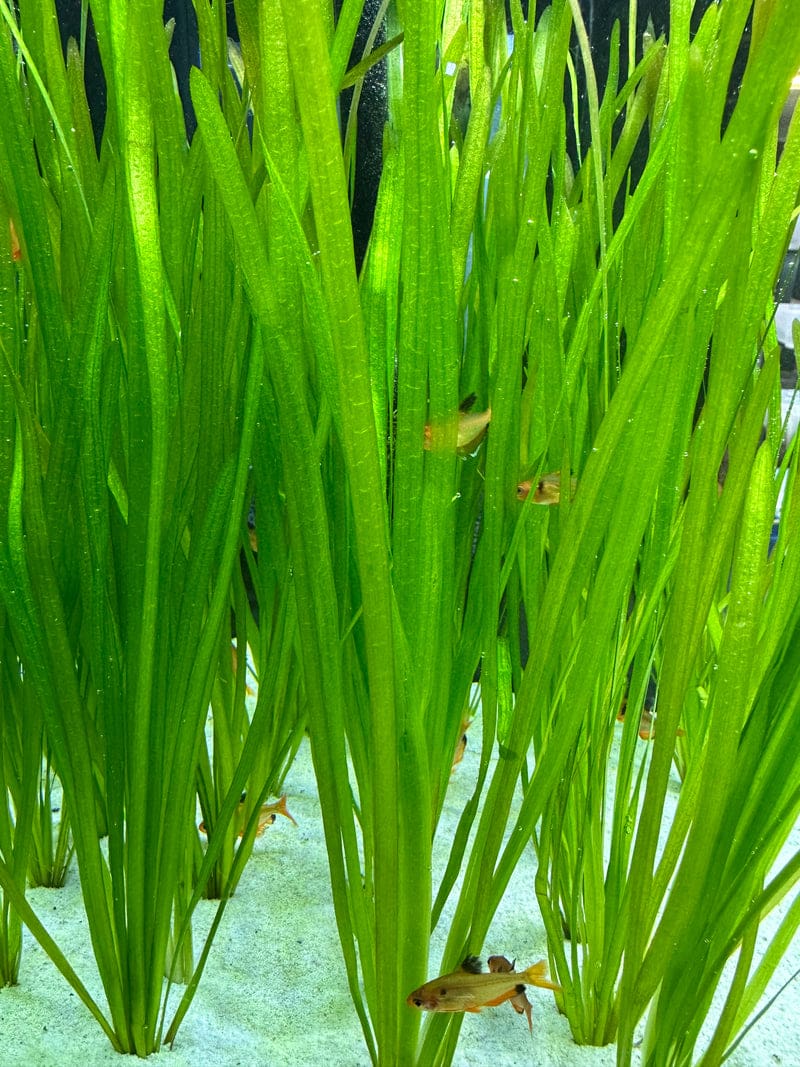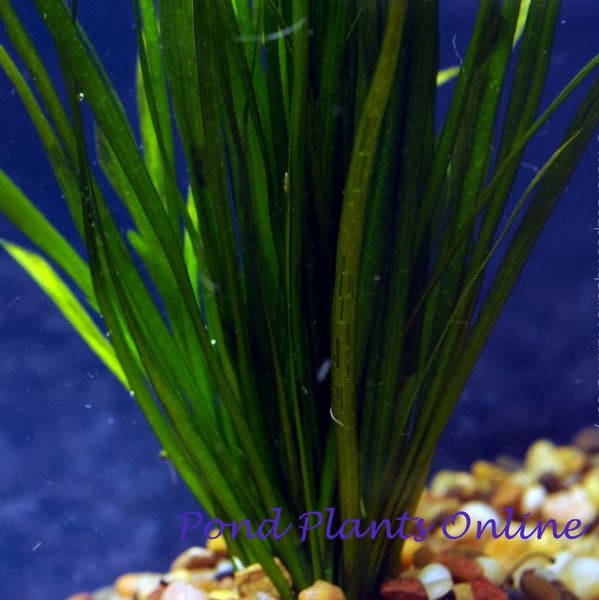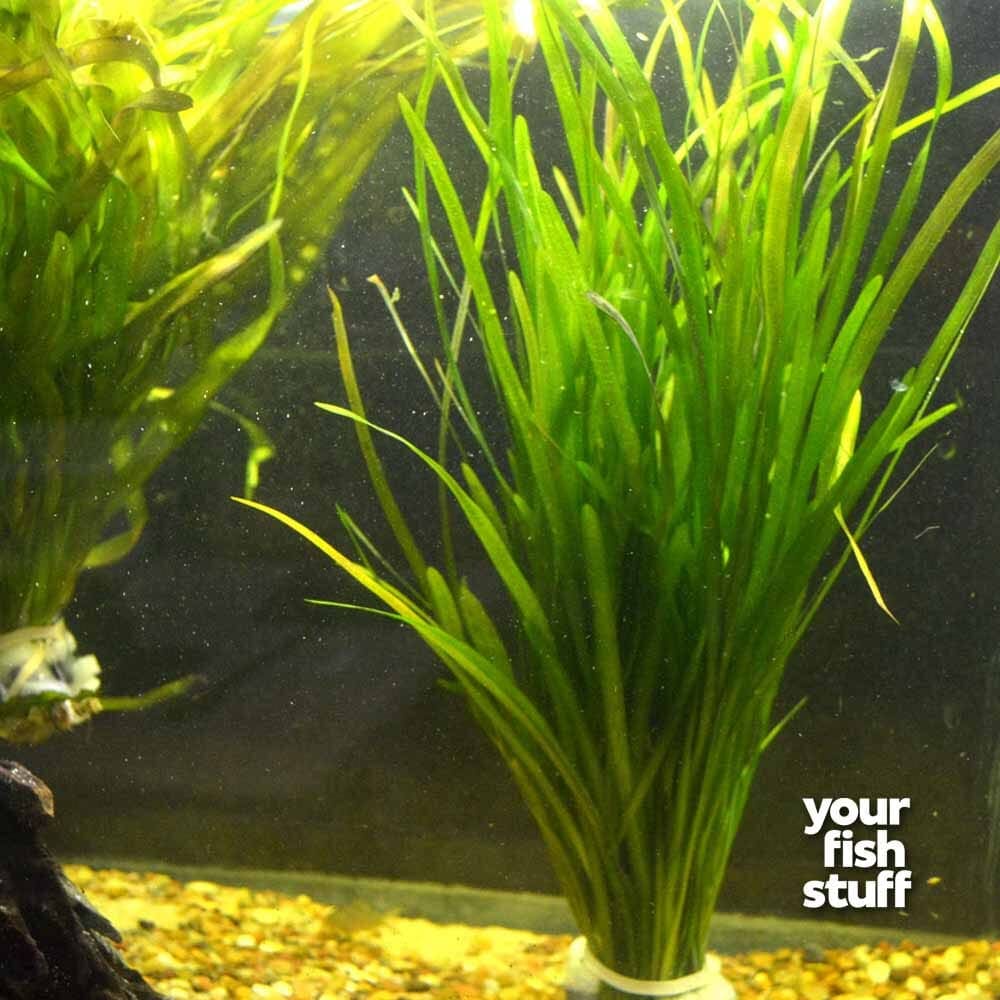In the realm of aquatic plant life, there exists a particular species known as Vallisneria Spiralis, often referred to colloquially as an aquatic weed. As you venture through this article, you will explore the fascinating intricacies of this unique plant. You will ascertain the plant’s physiological traits, its distribution and habitat, as well as its ecological role and significance within aquatic ecosystems. By the time you reach the end, you will have garnered a robust comprehension of Vallisneria Spiralis and its crucial part in the biodiversity of aquatic lifeforms.

Description of Vallisneria Spiralis
Vallisneria Spiralis, often referred to as eelgrass, tape grass or vallis, is an aquatic plant that is widely well-known for its ease of care and decorative attributes in the field of aquascaping.
Physical characteristics
Physically, Vallisneria Spiralis holds a remarkable appearance. It exhibits slender, grass-like leaves that spring from a clustered base or rosette. Characterised by its brilliant green hue, the leaves diameters basically between 0.5-1 cm and can reach lengths of up to 1 metre or more, giving it an elegant, flowing appeal.
Natural habitat
Naturally, Vallisneria Spiralis is found submerged in fresh to slightly brackish waters. Its habitat spans across wide range of latitudes, found in both temperate and tropical climates. This destinctive plant prospers in calm waters such as lakes, ponds, and slow-moving rivers, allowing its thin, long leaves to gracefully undulate in the current.
Common occurrences
You’ll typically find Vallisneria Spiralis sprouting in densely populated stands in its preferred habitat. Basking in the ambient sunlight, it forms lush underwater gardens, proving vitally significant in the ecology of water bodies.
Adaptations
Vallisneria Spiralis has undergone distinctive evolutionary adaptations to survive in its underwater habitat. It has developed an efficient reproductive mechanism to reproduce itself over large areas. Moreover, its slender leaves act as an adaption which enables it to combat water currents efficiently without being ripped apart.
Biology of Vallisneria Spiralis
Delving into the biology of Vallisneria Spiralis enlightens us about its lifecycle, reproductive process, growth procedure, and its taxonomy.
Life cycle
The life cycle of Vallisneria Spiralis is intriguing. It is a perennial aquatic plant, which means it lives for more than two years and can reproduce continuously throughout its life span.
Reproduction process
Vallisneria Spiralis exhibits a unique reproduction mechanism. The plant can reproduce both sexually and asexually, primarily through a mechanism called vegetative propagation. In sexual reproduction, it produces unisexual flowers which are pollinated underwater or on the water’s surface.
Growth process
Upon successful fertilization, the plant forms a long, spiralling stalk that rises towards the water’s surface where it bursts open and releases seeds that float to the surface. Subsequently, these seeds sink and embed themselves in the sediment, where they rapidly develop a root system and quickly grow into new plants.
Taxonomy and classification
Scientifically classified under the plantae kingdom, Vallisneria Spiralis belongs to the Hydrocharitaceae family, under the order Alismatales.

Importance of Vallisneria Spiralis in Aquatic Ecosystem
Vallisneria Spiralis bears an integral role in the aquatic ecosystem owing to the various benefits it provides.
Role in maintaining underwater ecosystem structure
This plant aids in maintaining the physical structure and stability of the underwater ecosystem. Its root system aids in reducing soil erosion by steadying the sediment layers.
Contribution to food chain
In the food chain, Vallisneria Spiralis serves as a vital primary producer, providing food and habitat to various aquatic organisms, from protozoa to waterfowl.
Improvement of water quality
The plant also aids in improving water quality by absorbing excess nutrients, such as nitrogen and phosphorus, thereby preventing the growth of harmful algal blooms.
Habitat for aquatic fauna
Vallisneria Spiralis serves as an excellent dwelling habitat for a myriad of microscopic organisms, offering them shelter, food, and breeding ground.
Cultivation and Care for Vallisneria Spiralis
The cultivation and maintenance of Vallisneria Spiralis is fairly simple, garnering its popularity among aquarium enthusiasts.
Planting considerations
Planting Vallisneria Spiralis requires you to first prepare a substrate of fine sediment or sand for rooting. Starter shoots should be planted deep enough in the substrate to ensure they stay grounded and can develop a robust root system.
Ideal temperature and lighting
The ideal temperature range for Vallisneria Spiralis ranges between 15-30 degrees Celsius, and moderate to strong lighting conditions are preferred.
Pruning and maintenance
For healthy growth, regular pruning is necessary as the plant can potentially dominate the tank if left unattended. Overall maintenance low as they are relatively disease-resistant.
Disease prevention and control
While generally hardy, Vallisneria Spiralis can be affected by algae outbreaks or snail pests if nutrient balances in the water tilt out of balance.

Vallisneria Spiralis in Aquascaping
Vallisneria Spiralis plays a vital role in the art of aquascaping due to its aesthetic appeal and easy care.
Benefits in aquarium decoration
In aquarium decoration, Vallisneria Spiralis provides contrasting texture with its slender, flowing foliage, introducing depth and character to any aquarium cover.
Compatibility with other aquatic plants
Vallisneria Spiralis is compatible with most other aquarium plants, although care should be taken to prevent it from overshadowing shorter plants.
Proper placement in aquascape design
Owing to its high growth potential, Vallisneria Spiralis should ideally be placed at the back of the aquarium layout or along the sides. The spiralling leaves of the plant also offer a sense of verticality, creating an intriguing depth in the layout.
Awareness of growth potential
One should be aware that without proper maintenance Vallisneria Spiralis can potentially overgrow an aquarium, taking over large swaths of space quickly due to its rapid propagation.
Propagating Vallisneria Spiralis
Given its ability to reproduce both sexually and asexually, propagating Vallisneria Spiralis is a relatively easy process.
Propagation method
Vegetative propagation is the most commonly observed method, where new plants sprout from the base of the parent plant, resulting in a thicket of green, unwinding leaves.
Ideal conditions for growth
The ideal conditions for propagating Vallisneria Spiralis include a balanced nutrient-rich substrate, moderate light, and a temperature range fluctuating between 15-30 degrees Celsius.
Common challenges and solutions
A common challenge in Vallisneria Spiralis propagation is ensuring the delicate starter shoots stay embedded in the substrate without being dislodged by water currents or fauna. This can be solved by situating them deeper in the substrate.
Role of propagation in maintaining biodiversity
Propagation of Vallisneria Spiralis is crucial for maintaining biodiversity in its native habitat. By reproducing quickly, it can help to repopulate regions that have been affected by pollution or habitat loss.

Negative Impact of Vallisneria Spiralis
Despite its many benefits, Vallisneria Spiralis can also have a negative impact, specifically as an invasive species.
Potential as an invasive species
In regions where Vallisneria Spiralis is not native, it has the potential to become an invasive species due to its rapid growth rate and ability to out-compete other flora.
Impact on native species
The rampant growth of Vallisneria Spiralis can crowd out other aquatic plants, leading to a reduction in biodiversity.
Management and control methods
Managing invasive Vallisneria Spiralis primarily includes mechanical removal by hand or machine, or the introduction of herbivorous species that feed on this plant.
Environmental consequences
The unchecked growth of Vallisneria Spiralis can potentially disrupt the existing ecosystem balance, resulting in an altered environmental condition which might not be suited for certain native species.
Scientific Research on Vallisneria Spiralis
The scientific community has shown considerable interest in Vallisneria Spiralis over the years.
Current scientific studies
Current scientific studies on this plant are focused on understanding its ecological role, its reproductive biology, and its potential use in restoration projects.
Historical research and findings
Historically, studies have illustrated Vallisneria Spiralis’s ability to survive in various water conditions and its role in the local ecosystem.
Future areas of study
Future research might explore the genetic adaptability of Vallisneria Spiralis, its use in pharmaceutical and medicinal applications, and its additional potential roles in ecosystem restoration.
Significant conclusions from research
The principal conclusions derived from research on Vallisneria Spiralis point out its crucial role within the aquatic ecosystem, its fast propagation, and the need for its regulated growth outside of its native regions.

Conservation Status of Vallisneria Spiralis
Vallisneria Spiralis is currently not listed as a species that is threatened or endangered.
Threats and challenges
The primary threats to Vallisneria Spiralis include habitat destruction through water pollution and the introduction of non-native, invasive species.
Current conservation efforts
Current conservation efforts revolve around preserving its natural habitat and maintaining water quality. Several local and regional bodies invest effort in monitoring the water quality and preventing pollution in areas where Vallisneria Spiralis is found.
Role of regulatory bodies
Regulatory bodies play an essential role in the conservation of Vallisneria Spiralis. They not only enforce legislation protecting its habitats, but also promote education and awareness regarding its importance.
Importance of community participation
Community involvement in Vallisneria Spiralis conservation is invaluable. By educating the public about the importance and need of preserving local ecosystems, it inspires individuals to contribute to conservation efforts.
Role of Vallisneria Spiralis in Human Culture
Vallisneria Spiralis holds an interesting niche in human culture.
Historical use and significance
Historically, the plant has been used as a primary food source for waterfowl.
Traditional medicinal uses
While not commonly used in traditional medicine, some cultures have used parts of Vallisneria Spiralis to treat minor ailments.
Symbolism in art and literature
The graceful, flowing leaves of Vallisneria Spiralis have intrigued and inspired artists, with the plant being portrayed in various forms of art and literature as a symbol of fluidity, vitality, and the haunting beauty of aquatic life.
Modern recreational use
The vogue of modern aquascaping has given a recreational dimension to Vallisneria Spiralis. Its easy care and aesthetic appeal have made it a popular choice among aquarists worldwide. In many cultures, this serpentine plant is admired for its artistic elegance and is prominently featured in aquariums, further fostering a deep connection between human beings and their aquatic counterparts.
Conclusively, Vallisneria Spiralis, although often termed as an aquatic weed, is a significant entity in aquatic ecosystems. Its characteristics and life processes beautifully illustrate the intricacies and marvels of aquatic life. Eventually, it is our duty to understand, appreciate, and most importantly, consrerve this wonderful gift of nature.